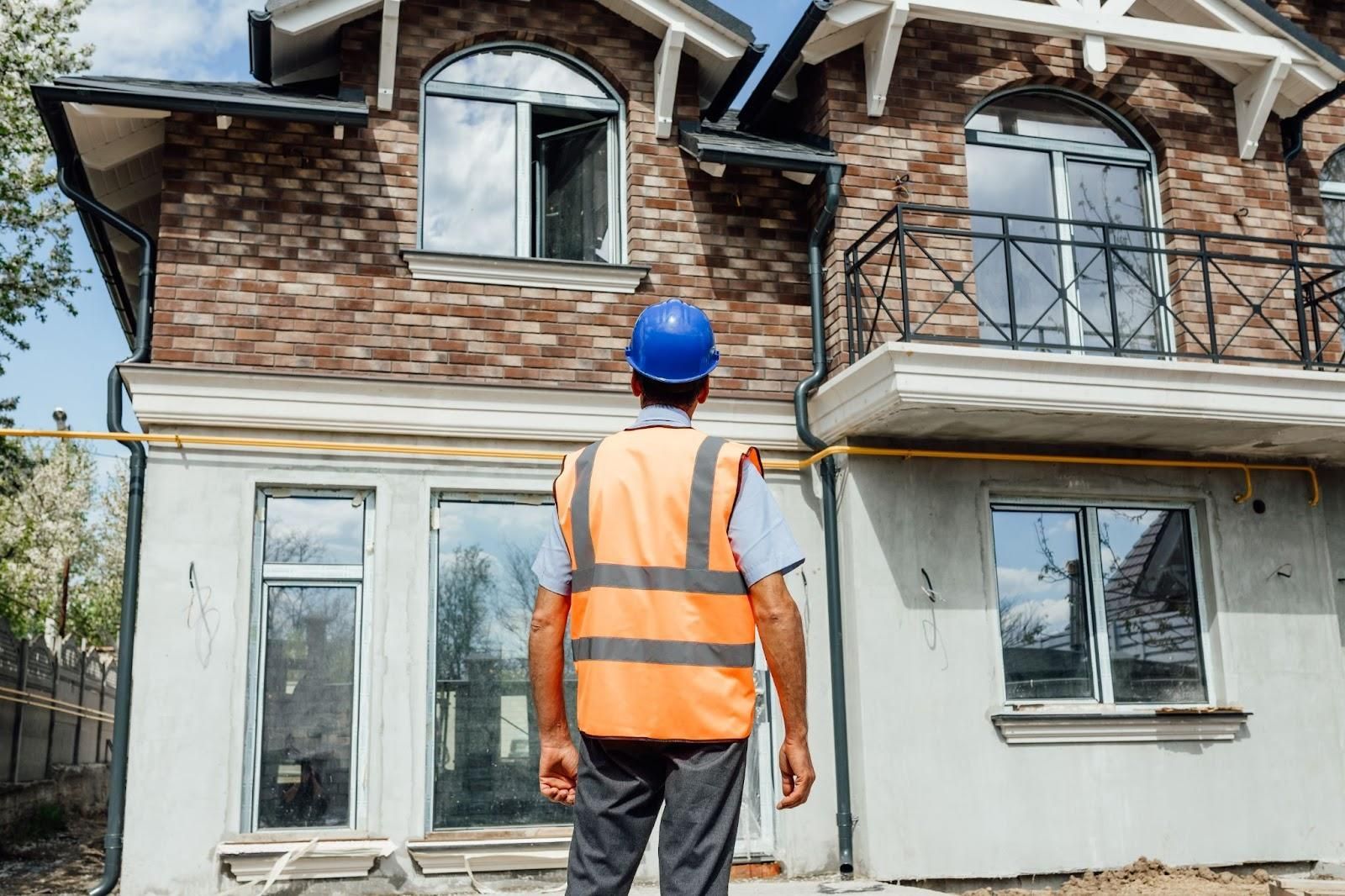Home Inspections in La Porte TX: What You Need to Know
Home inspection in La Porte TX is crucial for anyone purchasing a home in the area. It provides a detailed assessment of the property’s condition, helping potential buyers make informed decisions.
- A home inspection ensures safety by identifying structural and mechanical issues.
- Buyers can negotiate repairs or price adjustments based on the inspection report.
- Inspection reports offer peace of mind, knowing there are no hidden defects.
In La Porte, TX, home inspections are a must-have step in home buying. Our experts provide reliable and thorough inspections, allowing you to invest wisely in your new home.

Home Inspection Costs in Texas
When you're buying a home, understanding the cost of a home inspection in La Porte, TX is essential. Let's break down the average costs, what influences them, and why some inspections might be more specialized.
Average Cost
In Texas, a standard home inspection typically costs between $300 and $500. This range can vary based on factors like the size and age of the home. Larger or older homes may require more time and detail, potentially increasing the cost.
Factors Affecting Cost
Several factors can influence the cost of a home inspection:
- Property Size and Complexity: Bigger homes with more rooms and complex layouts take longer to inspect, which can increase the price.
- Home Age: Older homes might have more wear and tear, requiring inspectors to spend more time checking for issues.
- Location: Inspections in certain areas, like La Porte, TX, might have varying costs due to local market conditions.
Specialized Inspections
Sometimes, a standard inspection isn't enough. Specialized inspections might be needed, which can add to the cost. These can include:
- Structural Inspections: For homes with visible cracks or foundation issues.
- HVAC System Checks: Ensures heating and cooling systems are working properly.
- Pools and Spas: Assess the condition and safety of these features.
- Water Wells and Septic Systems: Important for homes relying on these systems for water and waste management.
Each of these specialized inspections can add $100 to $300 to the overall cost but provide peace of mind by ensuring all aspects of the home are thoroughly evaluated.
By factoring in these elements, you can better prepare for the inspection process and budget accordingly. Understanding these costs helps ensure you're making a wise investment in your future home.
Key Components of a Home Inspection
When you're getting a home inspection in La Porte, TX, it's crucial to know what inspectors will look at. Here's a breakdown of the main components they focus on:
Structural Components
Inspectors pay close attention to the structural integrity of the home. This includes examining the foundation, walls, and roof. Cracks in the foundation are a major red flag, as they can lead to costly repairs and affect the home's safety. Inspectors will also check for any signs of water damage or mold, which can compromise the structure over time.
HVAC Systems
The heating, ventilation, and air conditioning (HVAC) system is another critical area of focus. Inspectors will assess the age and condition of the HVAC units, checking for any performance issues or inefficiencies. This ensures that the system can provide proper temperature control and air quality.
Pools and Spas
If your property features a pool or spa, expect a thorough inspection of these amenities. Safety is paramount, so inspectors will carefully examine for potential hazards like damaged pool surfaces or faulty electrical systems. They'll also assess the filtration and heating systems to ensure they are operating smoothly.
Water Wells
For homes with water wells, inspectors evaluate the water quality and the well's structural condition. They will assess the pump system and test for contaminants to ensure the water is safe for consumption. This is vital for homes not connected to a municipal water supply.
Septic Systems
Septic systems require careful inspection to prevent costly repairs and health hazards. Inspectors will check the tank and drainage field for signs of leaks or blockages. Proper maintenance of septic systems is crucial to avoid environmental contamination and ensure efficient waste management.
Understanding these components helps you make informed decisions about your potential home purchase. Each element plays a vital role in the overall health and safety of the property, so a thorough inspection is essential.
Common Red Flags in Home Inspections
When you're considering a home inspection in La Porte, TX, it's important to be aware of potential red flags that can arise during the inspection process. These issues can affect both the safety and the value of your future home.
Structural Issues
A home's structure is like its backbone. If there are problems with it, everything else can suffer. Cracks in the foundation are one of the biggest red flags. They can lead to serious problems, like water damage or even structural failure. Walls and roofs are also checked for signs of damage.
Inspectors watch for uneven floors or doors that don't close properly. These can signal deeper structural issues. If you spot these problems early, you can save a lot of money and trouble down the line.
Safety Concerns
Safety is always a top priority. Inspectors look for hazards that could put your family at risk. This includes checking electrical systems for faulty wiring that might cause a fire. They also examine the plumbing for leaks that could lead to mold or water damage.
Another key area is the HVAC system. A malfunctioning system can lead to poor air quality. Pools and spas, if present, are inspected for proper fencing and safe electrical systems to prevent accidents.
Inspection Process
Understanding the inspection process can help you stay ahead of any issues. A licensed inspector will review all major aspects of the property. This includes the roof, foundation, plumbing, electrical systems, and HVAC systems.
During the inspection, it's a good idea to be present. This way, you can ask questions and understand the inspector's findings. They will point out any concerns and explain their significance in simple terms.
Being aware of these red flags and understanding the inspection process can make or break your home buying decision. Identifying problems early can save you from unexpected expenses and ensure the safety of your new home.
Choosing the Right Home Inspector in La Porte TX
Finding the right home inspector is crucial when considering a home inspection in La Porte, TX. A qualified inspector can spot issues that might not be immediately obvious, helping you make an informed decision about your future home. Here are key factors to consider:
Certified Professionals
Ensure your inspector is certified. In Texas, home inspectors must be licensed by the Texas Real Estate Commission (TREC). This certification means they have completed the necessary training and passed rigorous exams. A certified inspector will have the skills to identify even the smallest issues.
Experience
Experience matters in home inspections. An inspector with years of experience will likely have seen a wide range of issues and know what to look for. For instance, Accurate Home and Commercial Services boasts over 23 years of experience in the La Porte area. This extensive background allows them to notice more than just the standard inspection items.
Thoroughness
A thorough inspection is essential. The best inspectors take their time to examine every aspect of the property. They don't just tick boxes on a checklist. Instead, they use advanced tools like thermal imaging cameras and moisture detectors to uncover hidden problems.
A complete inspection should cover all major systems and components, including:
Key Components of a Home Inspection
When it comes to home inspections in La Porte, TX, understanding the key components can make a significant difference in assessing a property's value and safety. Let's break down these critical areas:
- Structural Components: Inspectors closely examine the foundation, walls, and roofs to ensure there are no cracks or weaknesses that could lead to costly repairs in the future.
- HVAC Systems: These systems are assessed for proper functionality and efficiency. A well-maintained HVAC system not only provides comfort but also saves on energy costs.
- Electrical Systems: Safety is paramount, so inspectors look for any hazards, such as faulty wiring or outdated panels, that could pose a risk to the home and its occupants.
- Plumbing: Leaks and potential water damage are common issues. Ensuring the plumbing is in good condition helps prevent future headaches and expenses.
Choosing a home inspector who is certified, experienced, and thorough will give you peace of mind. You'll know that your potential new home has been carefully examined, helping you avoid costly surprises in the future.
Frequently Asked Questions about Home Inspections
How much should a home inspection cost in Texas?
The cost of a home inspection in Texas can vary based on several factors. On average, you might expect to pay between $300 and $500 for a standard inspection. However, the price can go up if you opt for specialized inspections like those for pools, spas, or septic systems. These specialized checks are crucial for homes with additional features that require extra attention.
What is the biggest red flag in a home inspection?
One of the most significant red flags during a home inspection is structural issues. Problems with the foundation or roof can lead to expensive repairs. Inspectors will carefully examine these areas to ensure there are no signs of instability or damage. Safety concerns are another major red flag. Faulty wiring or plumbing leaks can pose serious risks to the home's occupants. A good inspector will highlight these issues in their report, giving you the information needed to negotiate repairs or price adjustments.
Can I attend the home inspection?
Yes, you can attend the home inspection, and it's highly recommended. Being present allows you to see any issues and ask questions directly to the inspector. This involvement provides a clearer understanding of the home's condition and the inspection process itself. While buyers are encouraged to attend, sellers are typically advised to stay away to maintain objectivity.
Attending the inspection gives you an opportunity to learn more about the property and gain insights into potential future maintenance needs. It's a valuable step in ensuring that your investment in a home inspection in La Porte, TX is well-informed and beneficial.
Conclusion
When it comes to home inspection in La Porte, TX, Accurate Home and Commercial Services stands out as a trusted partner. Their commitment to customer satisfaction and property safety is evident in every inspection they conduct. With a team of experienced inspectors, they ensure that every corner of your potential home is thoroughly examined.
Accurate Home and Commercial Services’ attention to detail means that nothing is overlooked. From the foundation to the roof, they assess all critical components, providing you with a comprehensive report that highlights any issues or concerns. This detailed approach not only aids in making informed purchasing decisions but also contributes to maintaining the long-term safety and value of your property.
The company’s dedication to quality service is underscored by their extensive experience and full-service inspections. They are equipped to handle specialized inspections for features like pools, spas, and septic systems, ensuring a complete evaluation of your home. Their focus on thorough inspections and clear communication makes them a reliable choice for anyone buying a home in the Greater Houston area.
For those considering a home purchase in La Porte, partnering with Accurate Home and Commercial Services means investing in peace of mind. Their expertise and customer-centric approach help you steer the complexities of home buying with confidence.
For more information on their services, visit their home inspection page to ensure your home purchase is backed by expert insights and comprehensive evaluations.











